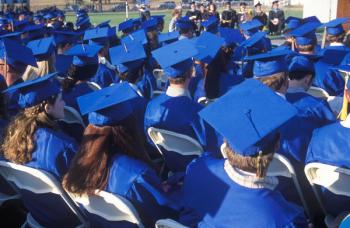
Misshapen heads in infants create complicated assessment
A number of abnormal head shapes can occur during development in the womb. A recent guide is available to help pediatricians assess these issues and understand when to seek a referral.
There are a number of abnormalities in head shape that a pediatrician might see in infants. Experts in craniofacial problems have put together new guidelines to help understand the differences in these abnormalities and how to address them.
The
“Our whole focus in presenting this manuscript, as it was with the preceding manuscript on visual identification and classification of congenital brain and spinal cord malformations, was to provide pediatricians with a visual 'atlas', if you will, of the types of abnormalities in the hopes of improving early diagnosis and referral,” Dias says.
Abnormal head shapes can occur from both synostotic—the fusion of 2 bones—or deformational processes. Issued as new guidance on identifying and managing these abnormalities, the report reviewed the characteristics of these head shapes, identifying features, secondary issues, and other considerations, as well as information on treatment and management. Aside from the obvious abnormal head shapes these children have, the study also highlights other potential fallout from these problems. According to the report, between 4% and 42% of children with single-suture craniosynostosis, and 50% to 68% of children with multisutural involvement displayed elevated intracranial pressure (ICP). Increased ICP is associated with both developmental and cognitive deficits, so early recognition and treatment are key. Research is unclear whether early intervention of craniosynostosis can improve outcomes, however, because there is some evidence that there is a genetic component to these malformations also that is associated with further neurodevelopmental problems.
The report offers detailed assessments of multiple head abnormalities. The most common form of craniosynostosis covered in the guide is sagittal synostosis, which makes up about 40% to 45% of cases. The appearance of this malformation is an elongated head shape with a parietal narrowing. Swift assessment and referrals are critical in this presentation, as surgical correction is usually performed at just 6 to 12 weeks of age. Children who are not treated until 6 to 10 months of age often face far more extensive treatment for adequate correction, the guidance adds.
A number of other abnormal shapes are covered in the guidance, including the triangular shaped forehead seen with metopic synostosis, asymmetric head shapes of unilateral coronal and lambdoid synostosis, the shortened head and facial malformations seen in bilateral coronal and lamdoid synostosis, and more. The guidance features assessment and treatment recommendations to some degree, and photos of each condition to aid in recognition.
Dias reviewed some of the key assessments used for these conditions.
“Very simply, it’s important to understand the presentations of each of the basic types of synostosis—metopic, unicoronal, bicoronal, saggital, and lambdoid—including not only the basic head shape, but the other secondary craniofacial changes that confirm the clinical diagnosis,” he says.
Early recognition is also a crucial step in helping these children, he says.
“It is imperative that clinicians identify these abnormalities early—within the first 1 to 2 months for sagittal, and before 5 or 6 months for metopic, coronal, and lambdoid to achieve best results, Dias says. “Delayed referrals result in the need for more complicated and extensive reconstructive procedures having greater risk.”
Timing of surgery is an important consideration in the management of head abnormalities, the guidance notes. Outside of the repairs that require almost immediate attention, like sagittal synostosis, repairs are traditionally not done for problems including coronal, metopic, and frontosphenoidal synostosis until around 6 to 10 months of age. The exception, the report notes, is when the infant has symptomatic increased ICP.
Deformational brachycephaly and plagiocephaly are the 2 most common head shape abnormalities seen by pediatricians in primary care settings, and can typically be identified by a visual exam. They rarely require imaging studies. In these cases, early diagnosis, intervention through positional changes, and a referral for helmet therapy by 5 to 6 months of age in more extreme cases is usually sufficient.
Most malformations can be classified by the following key identifiers:
- long shape: scaphocephaly, saggital
- short: brachycephaly, bicoronal, bilambdoid
- anterior point: trigonocephaly, metopic
- asymmetric: plagiocephaly, unilateral coronal, lambdoid.
Pediatricians should be prepared to counsel parents of children with craniosynostosis about monitoring for increases in ICP or developmental delays, as well.
Reference
1. Dias M, Samson T, Rizk E, Governale L, Richtsmeier J. Identifying the misshapen head: craniosynostosis and related disorders. Pediatrics. 2020;146(3):e2020015511. doi:10.1542/peds.2020-015511
Newsletter
Access practical, evidence-based guidance to support better care for our youngest patients. Join our email list for the latest clinical updates.




